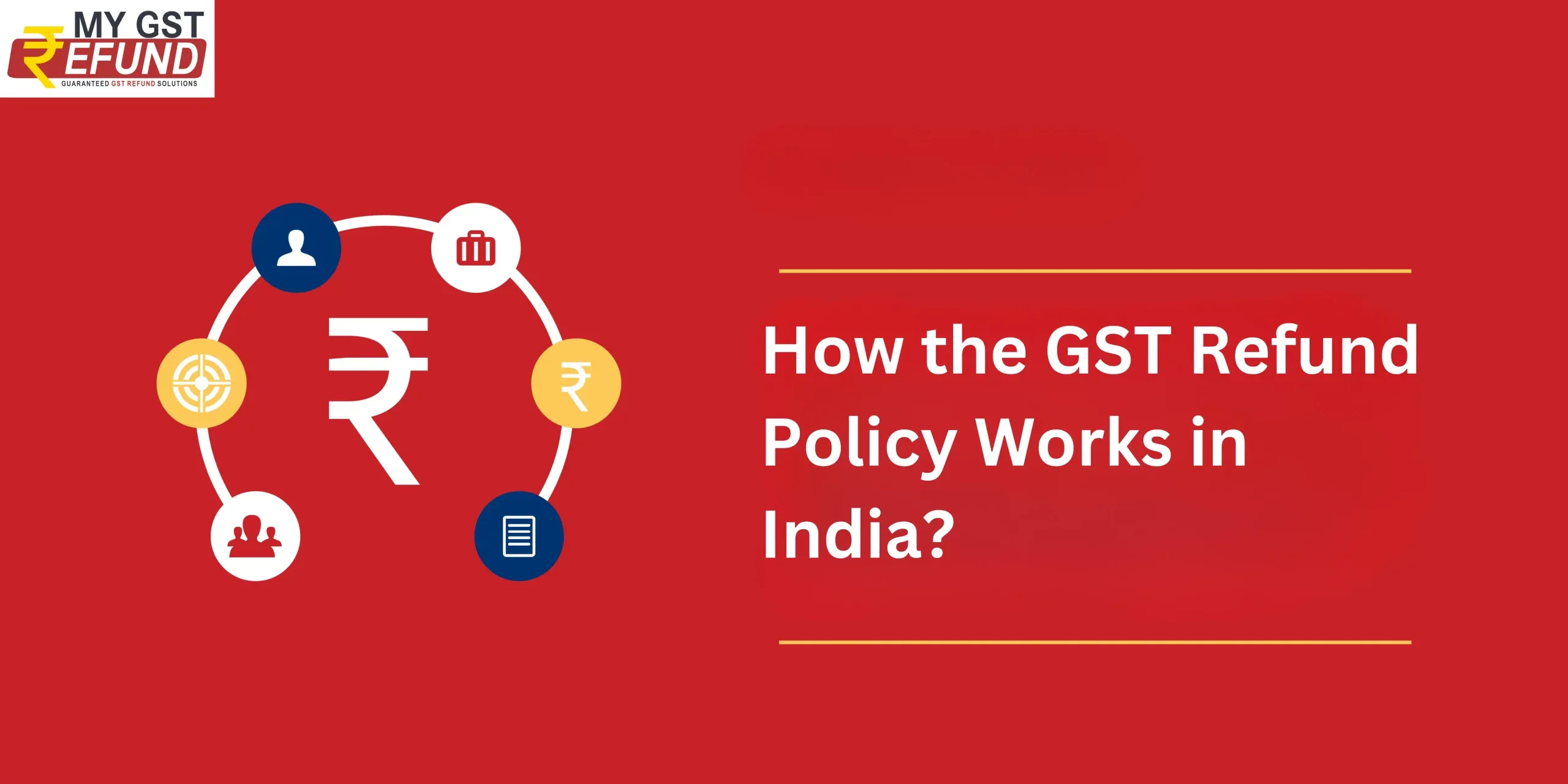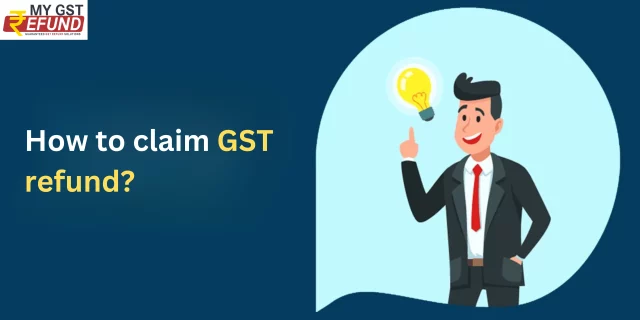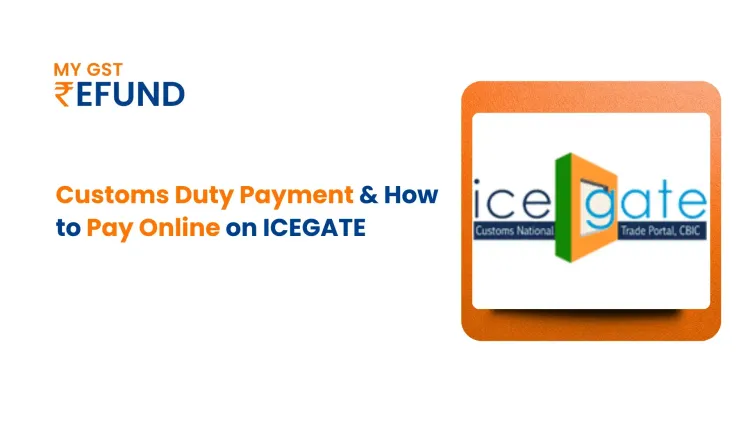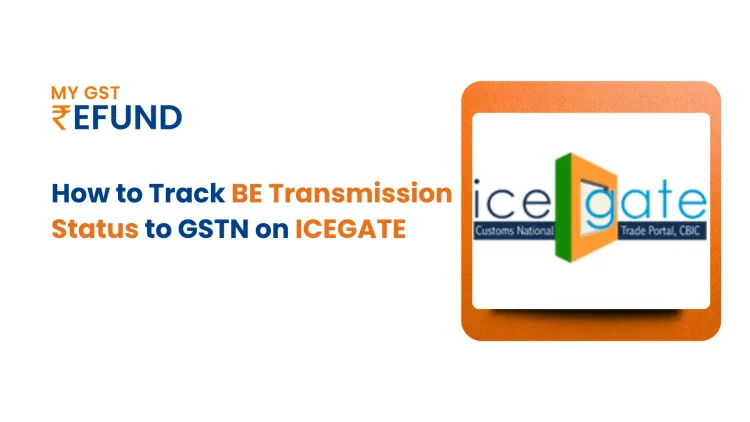How the GST Refund Policy Works in India?
Published on: Wed Jul 26 2023
What is GST refund?
GST refund is the process of claiming back the taxes paid on goods or services under the GST regime. GST refund can be claimed by taxpayers who have paid more tax than they are liable to pay, or who have paid tax on exports or supplies to SEZs, or who have accumulated excess input tax credit due to inverted tax structure.
GST refund is governed under Section 54 of the CGST Act, 2017 and the relevant rules and circulars issued by the government. GST refund can be claimed online through the GST portal by filing the relevant forms and furnishing the required documents.
Who can claim GST refund?
GST refund can be claimed by various persons under different scenarios, such as:
Exporters of goods or services who have paid IGST on their exports or who have exported under bond or letter of undertaking without payment of IGST.
Suppliers to SEZ units or developers who have paid IGST on their supplies or who have supplied under bond or letter of undertaking without payment of IGST.
Deemed exporters who have supplied goods to specified categories of persons, such as EOU, EHTP, STP, etc. and have paid GST on such supplies.
Persons who have paid IGST on the import of goods and have utilized such goods in making zero-rated supplies.
Persons who have paid GST on inward supplies which are used in making zero-rated supplies.
Persons whose input tax credit has accumulated due to output being nil rated or exempted or due to inverted tax structure (i.e., tax rate on inputs being higher than tax rate on outputs).
Persons who have paid GST by mistake or in excess of the amount due.
Persons who have paid GST on a transaction that is not liable to tax or is not a supply under GST law.
Persons who have paid GST under provisional assessment and the final assessment order is issued in their favour.
UN agencies, foreign diplomatic missions or consular posts, or any other persons notified by the government who are entitled to refund of GST paid on their purchases.
Tax deductors who have deducted more tax at source than they are required to deduct under Section 51 of the CGST Act.
Tax collectors who have collected more tax at source than they are required to collect under Section 52 of the CGST Act.
How to claim GST refund?

The procedure for claiming GST refund varies depending on the type and nature of refund claim. However, some common steps involved in claiming GST refund are:
Filing an online application for refund in Form GST RFD-01 on the GST portal within two years from the relevant date. The relevant date is different for different types of refund claims and is specified in Section 54(2) of the CGST Act. For example, for the export of goods, the relevant date is the date of dispatch/loading/passing the frontier of India; for the export of services before payment, the relevant date is either the date of receipt of convertible foreign exchange or Indian rupees (if permitted by RBI); for unutilised input tax credit, the relevant date is the end of financial year in which such claim arises; and so on.
Furnishing documentary evidence along with the application to substantiate the refund claim. The documents required may vary depending on the type and nature of refund claim. For example, for export of goods with payment of IGST, a statement containing details of shipping bills and invoices along with proof of payment of IGST is required; for export of services with payment of IGST, a statement containing details of invoices along with proof of payment of IGST and proof of receipt of foreign exchange is required; for unutilised input tax credit, a statement showing details of inward and outward supplies along with copies of relevant returns is required; and so on.
Filing a declaration in Form GST RFD-01A stating that the incidence of tax has not been passed on to any other person. This declaration is not required for zero-rated supplies and deemed exports.
Filing an undertaking in Form GST RFD-01B stating that no prosecution has been launched against them for any offence under GST law involving an amount exceeding Rs.250 crore. This undertaking is not required for zero-rated supplies and deemed exports.
Filing an indemnity bond in Form GST RFD-01C if claiming refund without payment of IGST for the export of goods or services or supplies to SEZs. The bond should be for an amount equal to the refund claim and should be accompanied by a bank guarantee for 15% of the refund amount. This bond is not required for notified persons such as government entities, PSUs, etc.
Filing a certificate from a chartered accountant or a cost accountant in Form GST RFD-01D if claiming refund of unutilised input tax credit due to inverted tax structure. The certificate should certify that the refund claim is correct and that the input tax credit has been used for making zero-rated supplies or has accumulated due to inverted tax structure.
How is GST refund processed?
The processing of GST refund involves the following steps:
Acknowledgement: Once the application for refund is filed online, an acknowledgement number is generated and communicated to the applicant. The acknowledgement is issued in Form GST RFD-02 within 15 days from the date of filing of the application.
Scrutiny: The proper officer scrutinises the application and the documents submitted by the applicant. If any deficiency is noticed, the officer issues a deficiency memo in Form GST RFD-03 within 15 days from the date of filing of the application or the date of receipt of any further information. The applicant has to file a fresh application after rectifying the deficiency. If no deficiency is noticed, the officer proceeds to process the refund claim.
Provisional sanction: The proper officer may sanction a provisional refund of 90% of the total refund claim (excluding the amount of input tax credit provisionally accepted) in case of zero-rated supplies and deemed exports. The provisional sanction is issued in Form GST RFD-04 within seven days from the date of acknowledgement or within seven days from the date of receipt of any further information. The provisional refund is credited to the bank account of the applicant as mentioned in the registration certificate.
Final sanction: The proper officer verifies the correctness and completeness of the refund claim and issues an order for final sanction or rejection of the refund claim. The final sanction or rejection is issued in Form GST RFD-06 within 60 days from the date of acknowledgement or within 60 days from the date of receipt of any further information. The final refund amount is credited to the bank account of the applicant as mentioned in the registration certificate. If any amount is rejected, it is either re-credited to the electronic credit ledger of the applicant or adjusted against any outstanding demand under GST law.
Payment advice: The proper officer issues payment advice in Form GST RFD-05 for each sanction order (provisional or final) and sends it to the authorised bank for payment of refund amount to the applicant.
What are some common reasons for rejection of GST refund?
Some common reasons for rejection of GST refund are:
Filing an incomplete or incorrect application or furnishing insufficient or irrelevant documents.
Missing the deadline for filing an application or furnishing additional information.
Passing on the incidence of tax to any other person (except for zero-rated supplies and deemed exports).
Violating any provision of GST law or rules or committing any offence under GST law involving an amount exceeding Rs.250 crore (except for zero-rated supplies and deemed exports).
Having any outstanding demand under GST law or any other law against them.
Having any pending proceeding or appeal or investigation or audit under GST law against them.
How to avoid rejection of GST refund?
To avoid rejection of GST refund, taxpayers should follow these tips:
File their application online in Form GST RFD-01 within two years from the relevant date along with all supporting documents and declarations.
Ensure that their bank account details are updated and correct in their registration certificate.
Ensure that they have filed all their returns and paid all their taxes due under GST law.
Ensure that they have not passed on the incidence of tax to any other person (except for zero-rated supplies and deemed exports).
Ensure that they have not violated any provision of GST law or rules or committed any offence under GST law involving an amount exceeding Rs.250 crore (except for zero-rated supplies and deemed exports).
Ensure that they have no outstanding demand under GST law or any other law against them.
Ensure that they have no pending proceeding or appeal or investigation or audit under GST law against them.
Conclusion
GST refund is a mechanism to provide relief to taxpayers who have paid more tax than they are liable to pay, or who have paid tax on exports or supplies to SEZs, or who have accumulated excess input tax credit due to inverted tax structure. GST refund can be claimed online through the GST portal by filing an application in Form GST RFD-01 within two years from the relevant date along with all supporting documents and declarations. GST refund is processed by issuing an acknowledgement, scrutiny, a provisional sanction, a final sanction, and payment advice by the proper officer within specified time limits. GST refund can be rejected due to various reasons such as filing an incomplete or incorrect application, missing the deadline, passing on the incidence of tax, violating any provision of GST law.
Are you Looking for GST Refund Service? Mygstrefund.com offers GST refunds on business, exports, and many more if your GST application is rejected. Get in touch with us today.
Related Posts




